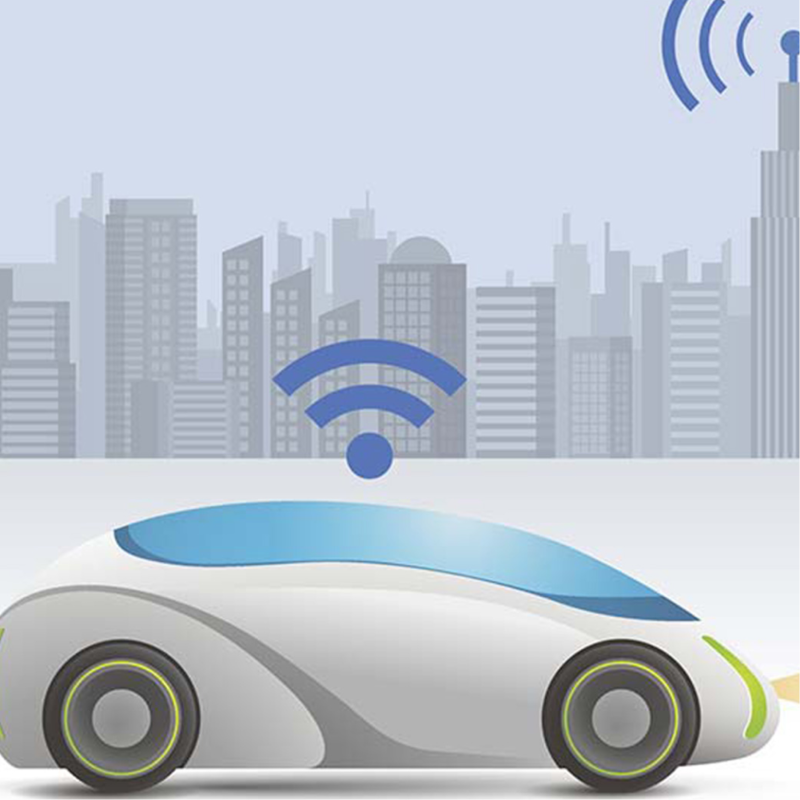Wi-Fi 6 is coming to vehicles soon… Wi-Fi 7 not so much
The auto sector tends to lag the broader market in adoption of the latest Wi-Fi technology
By Giorgia Varvelli
In recent months, the Sisvel team has met with a range of leading auto OEMs to discuss our efficient Wi-Fi 6 pool licence offering. We started this outreach based on an understanding that the sector is beginning to implement Wi-Fi 6 in planned new vehicle models.
Our research on the market has confirmed this state of play. Many automakers don’t yet produce vehicles equipped with Wi-Fi 6 capabilities, but people in the industry expect the technology to start gaining more headway towards the end of 2024.
There are numerous incentives for carmakers to integrate Wi-Fi 6. The volume of data transmitted to, from and within the vehicle has grown rapidly. Use cases include over-the-air firmware upgrades, real-time streaming of camera feeds, high-resolution infotainment content and upload of sensor and diagnostic data.
Wi-Fi 6 handles these tasks better than legacy Wi-Fi in several important ways. It transmits data faster, experiences less interference from nearby devices, covers a longer range and uses less power than its predecessor Wi-Fi 5. These enhanced features will make the in-vehicle experience smoother and more reliable for passengers.
But market data confirms relatively few vehicles on the road today are enjoying such benefits. According to research published by u-blox late last year, Wi-Fi 6 was projected to account for less than 20% of IVI (in-vehicle infotainment) and TCU (telematics control unit) module shipments in 2023.
Source: Wi-Fi at the heart of the Connected Car | Auto-Innovations Nov. 2023
According to the projection cited here, Wi-Fi 6 is not slated to achieve a majority market share in auto until 2026. That’s seven years after the Wi-Fi Alliance introduced the Wi-Fi 6 certification programme in 2019 and five years after the IEEE published the final version of the standard in 2021.
This represents a slower rate of adoption than we’ve seen for CPEs and consumer electronics. Wi-Fi 6 and 6E achieved over 50% market share of all products in 2022, just three years after certification began and one year after publication of the final standard. At the time, as the above figures show, it had almost no presence in vehicular Wi-Fi modules.
Again, this underlines a significant lag in automaker adoption – a period of several years when the latest Wi-Fi technology is prevalent in consumer devices but largely absent from vehicles.
What does this mean for Wi-Fi 7 in vehicles?
It’s probably several years away.
The Wi-Fi Alliance initiated the certification programme for Wi-Fi 7 at the beginning of 2024. We’re already starting to see cutting-edge products adopt the technology, and the standard is expected to be formally published around the end of this year.
Adoption does tend to occur in shorter cycles with each generation. Wi-Fi 5 gained 50% market share (among all products) four years after certification, while Wi-Fi 6 accomplished the same feat in just three years’ time.
With Wi-Fi 6 only now breaking through into vehicles, it’s far too early for a confident prediction on how long we’ll have to wait for in-car Wi-Fi 7. But if past trends are any indication, it could start to appear at low volumes in 2027 and account for most automotive modules two or three years after that.
Giorgia Varvelli is programme manager for Sisvel’s Wi-Fi 6 pool

